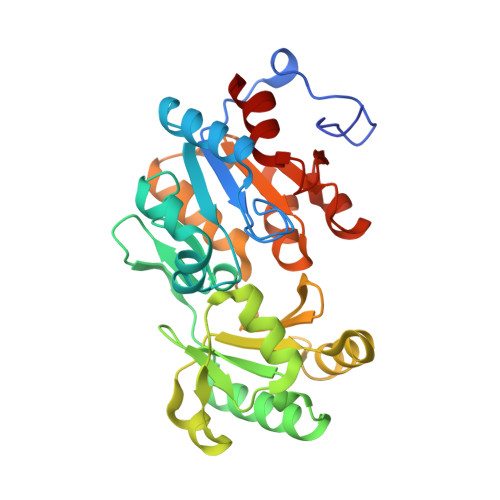Cap-domain closure enables diverse substrate recognition by the C2-type haloacid dehalogenase-like sugar phosphatase Plasmodium falciparum HAD1.
Park, J., Guggisberg, A.M., Odom, A.R., Tolia, N.H.(2015) Acta Crystallogr D Biol Crystallogr 71: 1824-1834
- PubMed: 26327372
- DOI: https://doi.org/10.1107/S1399004715012067
- Primary Citation of Related Structures:
4ZEV, 4ZEW, 4ZEX - PubMed Abstract:
Haloacid dehalogenases (HADs) are a large enzyme superfamily of more than 500,000 members with roles in numerous metabolic pathways. Plasmodium falciparum HAD1 (PfHAD1) is a sugar phosphatase that regulates the methylerythritol phosphate (MEP) pathway for isoprenoid synthesis in malaria parasites. However, the structural determinants for diverse substrate recognition by HADs are unknown. Here, crystal structures were determined of PfHAD1 in complex with three sugar phosphates selected from a panel of diverse substrates that it utilizes. Cap-open and cap-closed conformations are observed, with cap closure facilitating substrate binding and ordering. These structural changes define the role of cap movement within the major subcategory of C2 HAD enzymes. The structures of an HAD bound to multiple substrates identifies binding and specificity-determining residues that define the structural basis for substrate recognition and catalysis within the HAD superfamily. While the substrate-binding region of the cap domain is flexible in the open conformations, this region becomes ordered and makes direct interactions with the substrate in the closed conformations. These studies further inform the structural and biochemical basis for catalysis within a large superfamily of HAD enzymes with diverse functions.
- Department of Molecular Microbiology, Washington University School of Medicine, St Louis, MO 63110, USA.
Organizational Affiliation:



















